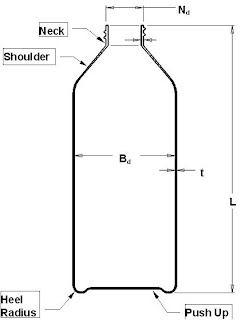PET (polyethylene terephthalate) processing.
+technology..png) This is huge subject. Many resins, many processes. I will focus on selected problems which can be interesting for packaging and one stage method, ISBM (injection stretch blow molding). In this way we had defined the resin, it will be bottle grade with intrinsic viscosity I.V. in range 0,76-0,84 dl/g .In the early 1940s PET was used for the first time in synthetic fiber application this is still on of its major uses. Bring over by checking yours cloths tag (polyester).
This is huge subject. Many resins, many processes. I will focus on selected problems which can be interesting for packaging and one stage method, ISBM (injection stretch blow molding). In this way we had defined the resin, it will be bottle grade with intrinsic viscosity I.V. in range 0,76-0,84 dl/g .In the early 1940s PET was used for the first time in synthetic fiber application this is still on of its major uses. Bring over by checking yours cloths tag (polyester). The most important is to understand polymer morphology. PET the one which comes in the bag has crystalline structure (temp. softening and melting point 250 dC) during injection step and rapid cooling then stretching and blowing we receive amorphous structure. The reason for it is that when we cool polymer chain can not position themselves to establish crystalline structure. When we consider the bottle which has the amorphous structure filled with hot water it will be softening from 60 dC (carefully with experiment because scalding).
Each step of the ISBM process has reflection in the product properties. Transparency because of amorphous structure that is rapid cooling. Good barrier properties come by biaxial orientation during stretching and blowing.



Comments